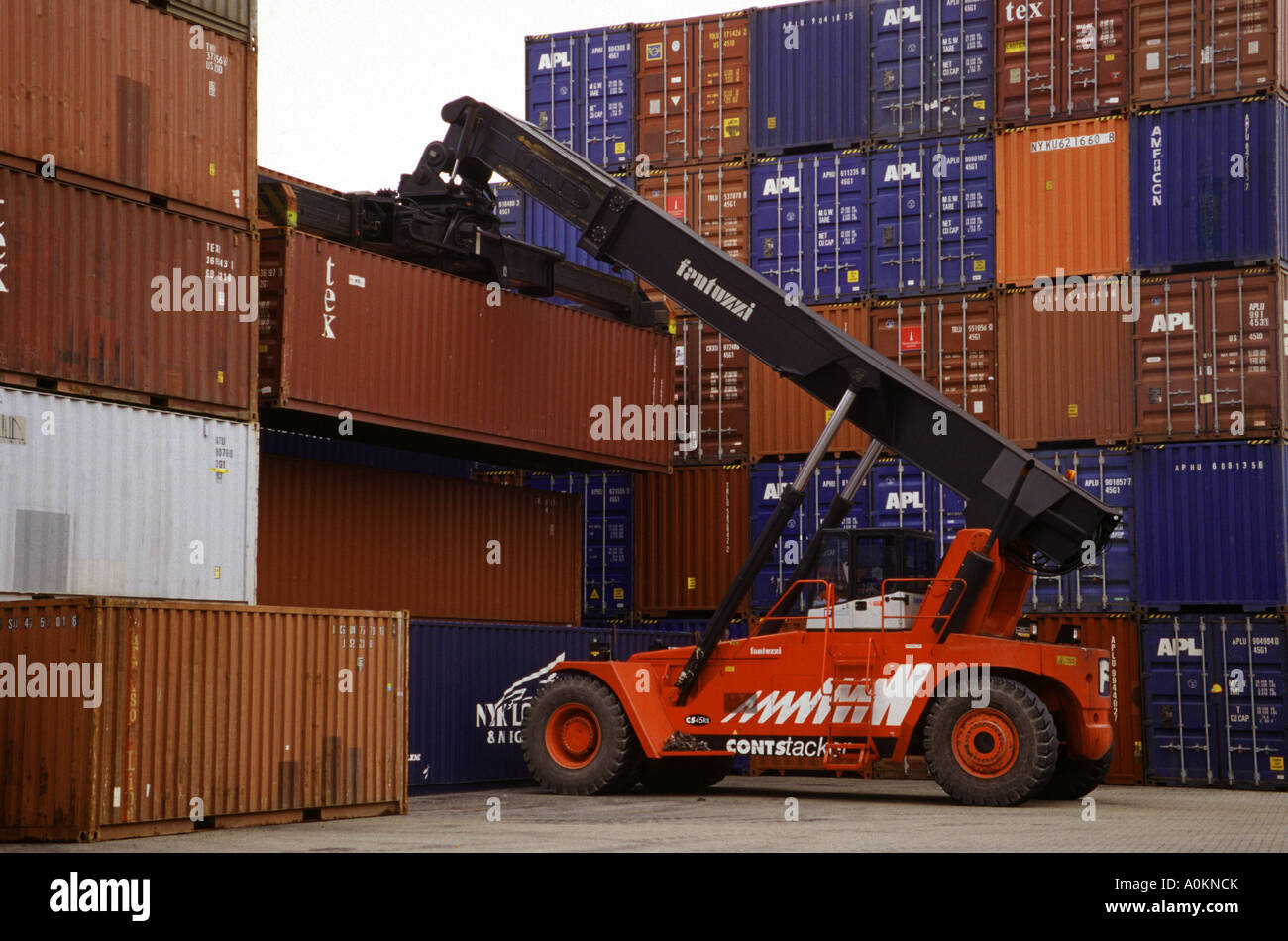Fork Truck
Powered Industrial Trucks - Forklifts
Overview
- Protect Workers Operating and Working Near Forklifts. OSHA Alert (Publication 3973), (2019).
- Safe Forklift Operation. OSHA QuickCard™ (Publication 3949), (2019).
- Sample Daily Checklists for Powered Industrial Trucks. Prepared by OSHA and the Industrial Trucking Association (ITA) Alliance. OSHA notes that this checklist and related graphics were developed in cooperation with the ITA as part of the OSHA-ITA Alliance.
- Sample Daily Checklists for Powered Industrial Trucks. Prepared by the UAW-Ford National Joint Committee on Health and Safety. OSHA thanks the UAW-Ford National Joint Committee on Health and Safety for granting permission to use the checklists and related graphics.
- Protecting Young Workers: Prohibition Against Young Workers Operating Forklifts. OSHA Safety and Health Information Bulletin (SHIB), (September 30, 2003). Informs employers that youth employment regulations (29 CFR 570) promulgated under the Fair Labor Standards Act prohibit most employees under the age of 18 years from operating forklifts for non-agricultural operations and reminds employers that all forklift operators must be trained and certified.
- Powered Industrial Trucks (Forklift). OSHA eTool. Provides information on OSHA's Powered Industrial Truck requirements [29 CFR 1910.178] and industry best practices.
Toyota Forklift Parts
What are powered industrial trucks?
- Your local Mitsubishi forklift truck dealer can help you find the right forklift solution for your business, while making sure you get the most from your investment. Selecting the right forklift is easy. Your local dealer will help guide you through the process– based on your application, operators and work demands. From financing to fleet.
- TSP Series Model Types. Turret Truck - TSP 6500 Series. The TSP 6500 Series has a max lift height of 531 inches and offers versatility in a VNA turret forklift to handle a wide range of warehousing challenges, including full pallet handling and case picking.

Powered industrial trucks, commonly called forklifts or lift trucks, are used in many industries, primarily to move materials. They can also be used to raise, lower, or remove large objects or a number of smaller objects on pallets or in boxes, crates, or other containers. Powered industrial trucks can either be ridden by the operator or controlled by a walking operator. Over-the-road haulage trucks and earth-moving equipment that has been modified to accept forks are not considered powered industrial trucks.
Fork truck definition is - a lift truck equipped with a forklift. The Raymond 7200 Reach-Fork truck is engineered to fit your narrow aisle application with multiple configurations and smaller battery compartment options to right-size your operation and reduce energy costs. Smaller battery compartments may allow for fewer aisles and more pallet positions than competing models.
What are the hazards associated with operating powered industrial trucks?

There are many types of powered industrial trucks. Each type presents different operating hazards. For example, a sit-down, counterbalanced high-lift rider truck is more likely than a motorized hand truck to be involved in a falling load accident because the sit-down rider truck can lift a load much higher than a hand truck. Workplace type and conditions are also factors in hazards commonly associated with powered industrial trucks. For example, retail establishments often face greater challenges than other worksites in maintaining pedestrian safety. Beyond that, many workers can also be injured when (1) lift trucks are inadvertently driven off loading docks; (2) lifts fall between docks and an unsecured trailer; (3) they are struck by a lift truck; or (4) they fall while on elevated pallets and tines.

It is a violation of Federal law for anyone UNDER 18 years of age to operate a forklift or for anyone OVER 18 years of age who is not properly trained and certified to do so. Download the Sticker.

What can be done to reduce the hazards related to powered industrial trucks?
Determining the best way to protect workers from injury largely depends on the type of truck operated and the worksite where it is being used. Employers must ensure that each powered industrial truck operator is competent to operate a powered industrial truck safely, as demonstrated by the successful completion of the training and evaluation specified in 29 CFR 1910.178(l)(1).
Standards
Powered industrial trucks are addressed in specific OSHA standards for general industry and maritime.
Hazards and Solutions
Provides references that may aid in recognizing hazards associated with powered industrial trucks and provides examples of possible solutions.
Additional Resources
Provides links and references to additional resources related to powered industrial trucks.
- Protect Workers Operating and Working Near Forklifts. OSHA Alert (Publication 3973), (2019).
- Safe Forklift Operation. OSHA QuickCard™ (Publication 3949), (2019).
- Sample Daily Checklists for Powered Industrial Trucks. Prepared by OSHA and the Industrial Trucking Association (ITA) Alliance. OSHA notes that this checklist and related graphics were developed in cooperation with the ITA as part of the OSHA-ITA Alliance.
- Sample Daily Checklists for Powered Industrial Trucks. Prepared by the UAW-Ford National Joint Committee on Health and Safety. OSHA thanks the UAW-Ford National Joint Committee on Health and Safety for granting permission to use the checklists and related graphics.
- Protecting Young Workers: Prohibition Against Young Workers Operating Forklifts. OSHA Safety and Health Information Bulletin (SHIB), (September 30, 2003). Informs employers that youth employment regulations (29 CFR 570) promulgated under the Fair Labor Standards Act prohibit most employees under the age of 18 years from operating forklifts for non-agricultural operations and reminds employers that all forklift operators must be trained and certified.
Fork Truck Certification
- Powered Industrial Trucks (Forklift). OSHA eTool. Provides information on OSHA's Powered Industrial Truck requirements [29 CFR 1910.178] and industry best practices.
